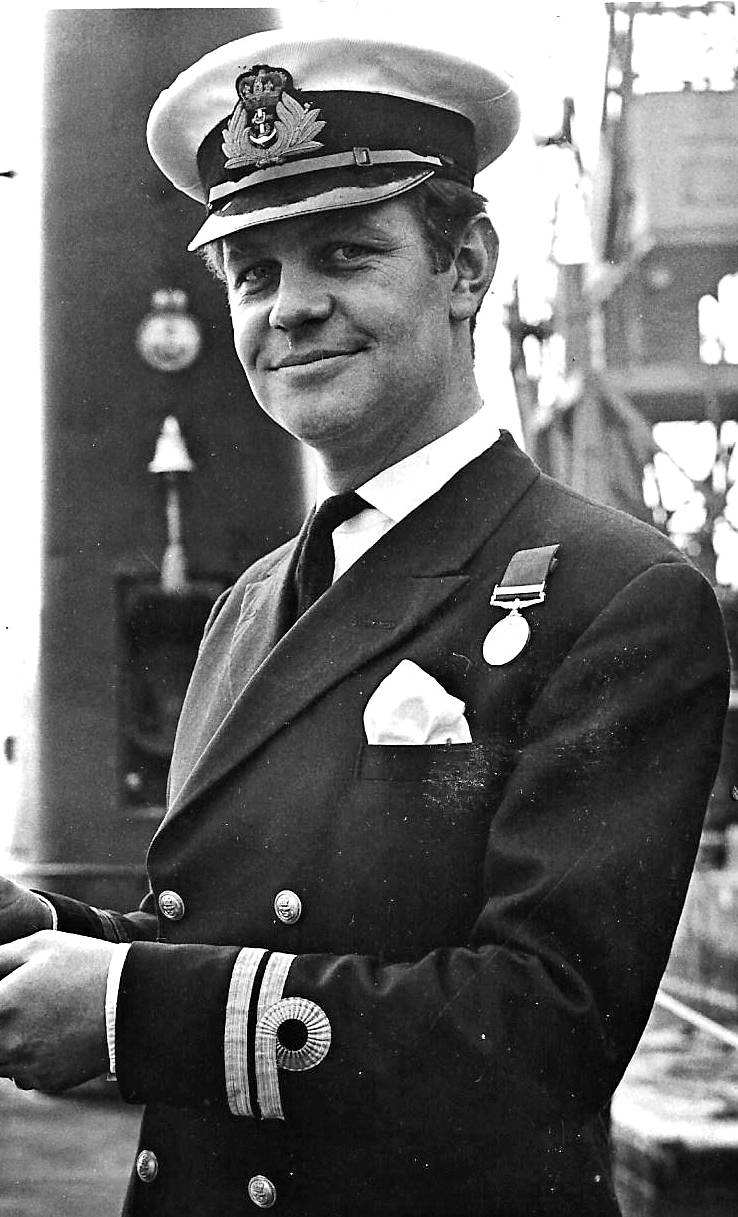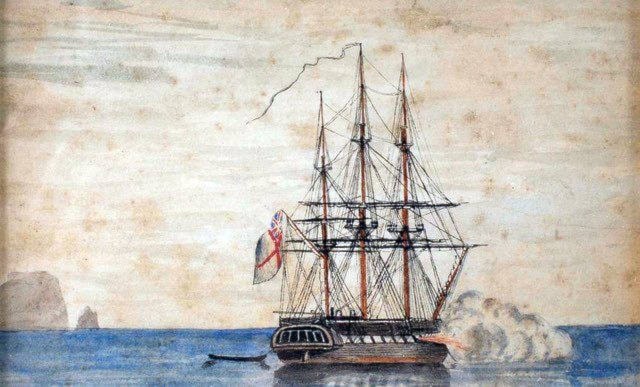Elida Peers | Contributed
One of our most popular walks is on Whiffin Spit – so imagine what a thrill it was to receive a message from Scotland, from John Drabble, great-grandson of John George Whiffin.
While we’ve always known that the geographic features of Sooke inlet were given names of his officers by Capt. Henry Kellett, Royal Navy commander of HMS Herald when he surveyed the inlet in 1846, imagine our surprise that Whiffin’s great-grandson had transcribed his journal and reached out to share with us. We have taken some excerpts from the journal for this account:
• Weds 24 June 1846: Sighted Cape Flattery – sighted the land at daylight – by this I lost 2 bottles of claret, having bet S-gs (?) two to one, that we should not make the land in the middle watch of Wednesday 23rd … At half past eight, a canoe with eight Indians came alongside. Their dress was the most uncumbersome I have seen, having nothing on but a blanket … they have, as far as I can judge at first sight, a very good-tempered look and appear to take a joke good-humouredly. Their hair is tied up behind, similar to a grown-up female’s in England, and through their nose most of them wear a ring to which is suspended a small piece of pearl. Some of them wore a brass wire ring around their necks. … In their boat, or rather canoe, they had a quantity of dried salmon, fishhooks made of bone and models of small canoes from which they required in exchange – tobacco and paint.
• Thurs 25 June: At daylight we ran in from the shore, some canoes came alongside very early – among the rest was a chief who called himself King George and showed papers confirming his rank – he spoke sufficient English to make himself understood but it was occasionally mixed up with coarse words which he doubtless been taught by the whaling ships – he told us there were three ships up the Straits. (He was on his way to the Fort to trade a sea otter skin.)
As we neared the entrance, several other canoes visited us, filled with salmon and many other kinds of fish … some weighed 30 lbs – they gave these in exchange for a cotton handkerchief and a little tobacco … a tremendous hearty meal was made off them, nor can anyone be at all surprised at it – fancy 16 adults after being in a hot climate having gone through a trip of ten weeks salt provisions, or rather salt horse, suddenly finding themselves before two or three large dishes of boiled salmon, melted butter and sauce.
• Fri 26 June: Anchored off Port Victoria – Early this morning we weighed and proceeded up the Straits at 7 am, a steamer was observed right astern – she showed English colours … found her to be HBM. St. CORMORANT (His Britannic Majesty’s Steamer) … Captain Kellett, being the senior officer, ordered the CORMORANT to take us in tow … An Englishman belonging to the Hudson’s Bay Company came on board and told us we had anchored 15 miles too far up – he also acquainted us the FISGARD was at Nisqually and the MODESTE at Vancouver.
• Tues 30 June: Captain and 4 boats away surveying … great anxiety has prevailed all day for one of the officers of the PANDORA … he went away yesterday morning with a party deer shooting – most on board have given him up … we fire a large gun every hour in the event of him being near the coast … news came that he had returned with the Indians … he had no provisions with him and night overtaking him, he was forced to climb up a tree as a protection from the wild beasts – he saw several wolves, bears and panthers … he remained up the tree till daylight.
• Sun 5 Jul: I learned from one of the officers of the Fort that the Indian called King George … had been murdered while proceeding down the Straits in his canoe – after completing his bargain with the Hudson’s Bay Company for the skin. He was proceeding homeward when he was waylaid and killed for the six blankets. He belongs to the Clallam tribe in Neeah.
• Mon 6 July: Weighed at 4. At 2 we anchored in Discovery Bay, where we are to complete our wood and water … In the evening the FISGARD’s pinnace brought on board 15 sheep which Captain Duntze had sent us from Nisqually.
• Wed 8 July: Billings and myself walked along the beach towards the Indian encampment, it is covered with cockles, clams, mussels … When we arrived at the place where the boat was watering, Cooper and Woodward were regaling themselves with chops … it was not long before we had some of the chops frying after the fashion of the Indians … I amused myself by playing with some of the little children who were crowding around us … they are many of them very nice children and of very engaging manners. …. Went on shore with Woodward and Billings.”
• Sun 12 Jul: (Historian’s note: It appears that the references to 16 on the crew have been the officers, as this entry describes “the men”).
The men went ashore for the first time since leaving Valparaiso in December, being upward of seven months. I don’t think they derived much pleasure from it … there are no grog shops which to them is a great drawback as it deprives them of the pleasure of getting drunk.
• Tues 14 Jul: Beautiful day. Hutchinson shot in a short time 12 brace of snipe …
Sat 18 Jul: The anniversary of the day of my birth, I completed my 20th year … my employment today was larking with the Indians and picking gooseberries and backberries which here grow wild and in great abundance … met Goodridge down on the beach …
• Tues 21 Jul: Weighed for Cormorant Bay … here we found the PANDORA … Captain sent barge with Parsons and Pim to meet the FISGARD launch …
• Fri 7 Aug: Sailed at daylight from Stripe Bay and anchored ½ past 9 in Sooke Bay. The captain immediately went on shore leaving word that he wished no one to land until he had assured himself of the friendly disposition of the natives. This, he informed us on his return as he was convinced.
• Mon Aug 10: A greater number of Indians than usual visited us, their canoes were unusually large and well built – to me it appeared as if they were either returning or proceeding on some war expedition, their musquets were all loaded … they did not leave us till late in the evening. They then adjourned to the beach, which was soon illumined by their fires. We could plainly hear them singing nearly the whole night.
Unfortunately, this is where Whiffin’s journal ends. John Drabble reports that while Whiffin had started the journey as the Captain’s clerk, he was to replace the purser, who had died on board. Readers may note that geographical names from local maps include Billings Spit, Cooper Cove, Hutchinson Cove, Pim Head, Parsons Point, Woodward Point, Goodridge Island, and Goodridge Peninsula, all officers mentioned in this account.
•••
Elida Peers is the historian of the Sooke Region Museum.
editor@sookenewsmirror.com
Like us on Facebook and follow us on Twitter

